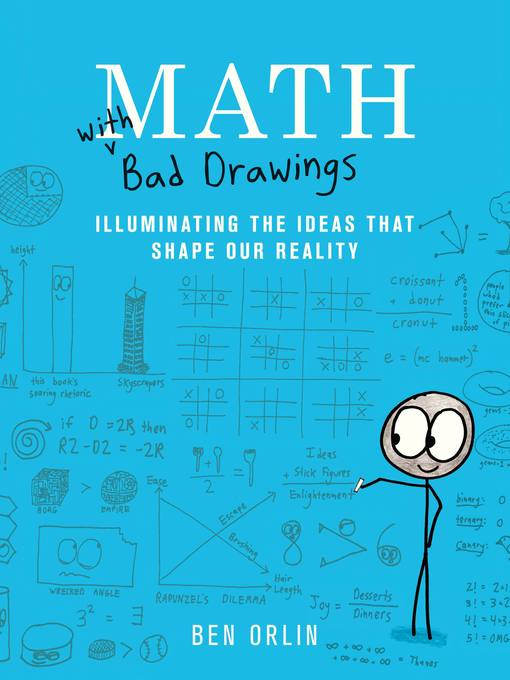Soh Kam Yung reviewed Math with bad drawings by Ben Orlin
An entertaining book on mathematics, with bad drawings
4 stars
An entertaining book on mathematics with, of course, bad drawings (but illuminating ones) that covers several sections of mathematics. Separated into different parts, it can be read at a sitting, but I found that to be an overwhelming read, as it is thick with information that needs time to digest. Digging into its sections at leisure would probably be a better way to digest the entertaining and interesting mathematical information provided in the book.
Part One is on how to think like a mathematician and looks at mathematics from various viewpoints: the teacher, the student, mathematicians and scientists. Each has a different view on mathematics, and probably accounts for why some people learning mathematics have a hard time understanding the relevance of mathematics to their lives until much later.
Part Two looks at geometry and via examples like the design of girders, why the A4 paper has irrational dimensions, the …
An entertaining book on mathematics with, of course, bad drawings (but illuminating ones) that covers several sections of mathematics. Separated into different parts, it can be read at a sitting, but I found that to be an overwhelming read, as it is thick with information that needs time to digest. Digging into its sections at leisure would probably be a better way to digest the entertaining and interesting mathematical information provided in the book.
Part One is on how to think like a mathematician and looks at mathematics from various viewpoints: the teacher, the student, mathematicians and scientists. Each has a different view on mathematics, and probably accounts for why some people learning mathematics have a hard time understanding the relevance of mathematics to their lives until much later.
Part Two looks at geometry and via examples like the design of girders, why the A4 paper has irrational dimensions, the geometric scaling laws and the design of many sided dices, shows how geometry plays a part in our daily lives. He closes with an entertaining example about a fictional Star Wars Imperial Engineer grumbling over the various trade-offs required to design the Death Star to Grand Moff Tarkin's specifications.
Part Three looks at probability and via various examples like the lottery, genetics, telling the odds, the costs of buying (and not buying) certain types of insurance and misunderstanding the odds that an event are independent of other events (the pricing of CDOs [collateralized debt obligations]), show how probabilities can mislead people in thinking that the odds of certain events happening are actually lower or higher than people imagine them to be.
Part Four is related to Part Three but looks at statistics. It starts with a look at the terms used by statistics (like mean, median, etc.) and show how each of them can lead or mislead people into understanding statistical results if you don't know what they show (and don't show). The next part on baseball statistics may bore or interest you and covers the history of the various baseball statistics. Next, the P-value used in scientific statistics is covered and shows how and why it can mislead scientists into believing that an experimental finding is 'statistically significant' when it is not. Going closer to the author's field (teaching), he looks at the measures used to score schools and asks whether such scores are used as a window on a school's performance or as a score to show how good or bad a school is, both of which produce different outcomes for the schools concerned. The final section of statistics looks at the interesting field of determining authorship based on the statistics of words and sentences used by various authors over time.
Part Five is a bit of a mixture with the theme of how small changes can have large effects. He first looks at the misunderstanding over marginal tax rates and tax brackets and how they affect your actual income and tax rates. The issue of voting, voting boundaries and gerrymandering is then looked at, followed by chaos theory and a look at fractal dimensions.
All in all, an interesting book that is best read part by part as and when you feel a need to learn or refresh your memory of some aspects of mathematics covered in the book.

